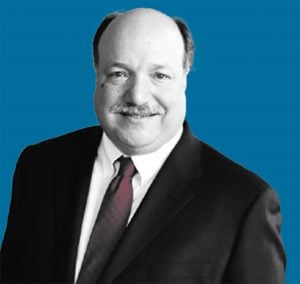 Despite the continued rumblings out of Washington, it's clear the fiduciary fight has moved to the arena where it always should have been: the marketplace. (Photo: Shutterstock)
Despite the continued rumblings out of Washington, it's clear the fiduciary fight has moved to the arena where it always should have been: the marketplace. (Photo: Shutterstock)
Remember this: Generals fail because they always believe they're fighting the last battle. Are you one of those generals? Or are you planning for what's next?
Despite the continued rumblings out of Washington, it's clear the fiduciary fight has moved to the arena where it always should have been: the marketplace. Granted, it was difficult to relocate it there while the public remained blissfully ignorant of the meaning and intent of “fiduciary.” In large part, we have the now-vacated DOL Fiduciary Rule to thank for bringing the concept of fiduciary to the broader public. Once John Oliver featured it on his show, we passed the critical point of “public awareness.”
Related: With fiduciary rule's demise, plan sponsors shift focus
Face it: relying on regulators to frame (let alone enforce) the morality of fiduciary was always a bit of a gamble. There are just too many loopholes when it comes to regulations. For example, look at what happened to the 2012 401(k) Mutual Fund Fee Disclosure Rule. Has that provided more clarity or more confusion? Be glad we're not in the same position with fiduciary.
 Christopher Carosa, CTFA, is chief
Christopher Carosa, CTFA, is chiefcontributing editor for FiduciaryNews.com,
a leading provider of essential news and
information, blunt commentary and practical
examples for ERISA/401(k) fiduciaries, individual
trustees and professional fiduciaries.
Let's talk about disclosure. Some continue to believe this is the best path towards protecting consumers. Daylian Cain long ago showed us the fallacy of relying on disclosure. His research reveals that disclosure tends to have the opposite effect than what is intended. It drives decision makers towards conflicts-of-interest instead of away.
One strategy to expose this potential damage is to inform investors about the who-what-where-why-and-how of Cain's conclusions. Let them know the “Jedi mind trick” of disclosure. Challenge them to be prepared for it and constantly on the lookout for it. Treat disclosure not as a halo of innocence, but as the devil's horn of guilt.
If there's one thing we've learned from the 2012 fee disclosure requirement, it's that things can very easily get lost in the sauce. What does this mean in terms of fiduciary? It means material (and harmful) conflicts-of-interest can be buried in a sea of immaterial conflicts-of-interest. You need to create a laundry list of material conflicts-of-interest. Diane Del Guercio, Jonathan Reuter, Paula A. Tkac, Veronika Krepely Pool, Clemens Sialm, and Irina Stefanescu have all produced research papers detailing exactly which conflicts-of-interest do the most harm to investor returns.
There remains, however, one piece of disclosure that rules them all.
In all formal written agreements, add a clause that declares you will act in the capacity of a fiduciary, as defined by ERISA. This, in fact, is the only disclosure that has any actual meaning. All other disclosures merely obfuscate.
Indicating you will act as a fiduciary automatically says you will not engage in any material conflicts-of-interest (because they are not in the best interest of the client). Doing it in writing says you really mean it; you're willing to legally bind yourself to this promise.
Adopting these strategies will give you the ammunition you need to win the fiduciary battle about to take place.
Read more:
© 2025 ALM Global, LLC, All Rights Reserved. Request academic re-use from www.copyright.com. All other uses, submit a request to [email protected]. For more information visit Asset & Logo Licensing.







